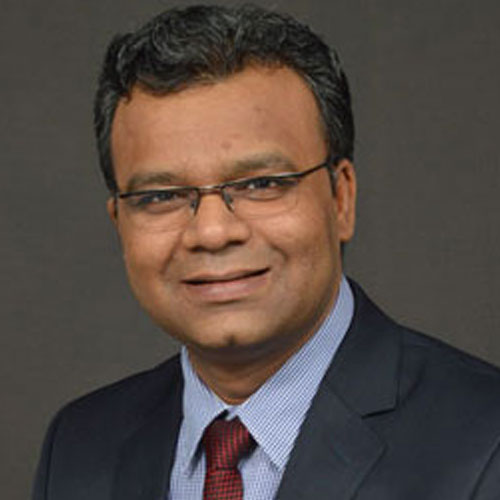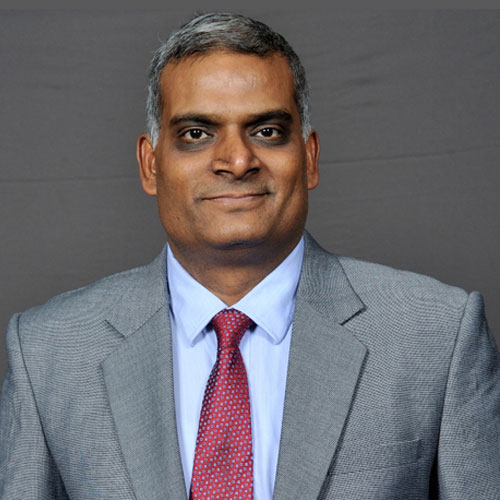Mr. Dhawal Dalal
Chief Investment Officer - Fixed Income
With over 20 years of experience and an MBA from University of Dallas (USA), meet our CIO of Fixed Income Asset - Mr Dhawal Dalal.
Dhawal has joined Edelweiss Asset Management Limited in the year 2016. He is responsible for the overall growth of fixed income assets through a healthy mix of retail and institutional clients.
When not occupied with work, he loves reading on emerging trends in the global markets, geo-political developments and books on behavioural trends. He’s also a movie buff and never misses a chance to watch a blockbuster with his near and dear ones. A humble and learned person, he strongly believes that every individual should have a sense of purpose in life!
Before joining Edelweiss Asset Management Limited, he was the head of Fixed Income at DSP Black Rock Investment Managers Private Limited and led a team of Fund Managers managing fixed income assets. His role there was to expedite overall growth of fixed income assets, performance and client interactions.
Q1. Should geopolitical tensions intensify, there could be repercussions on crude oil prices, making inflation a significant concern for investors. What rate trajectory do you anticipate from the US Federal Reserve and the Reserve Bank of India (RBI) in FY25?
Ans: Our base case for crude oil prices to settle between $75 to $80 per barrel in FY25. That said, India’s continued purchase of cheap Russian oil and its settlement in non-USD currency is quite beneficial for India’s FX reserves and overall inflation outlook. We continue to expect average CPI to be around 4.5% in FY25 as indicated by the RBI. If there is any potential uptick in average inflation, it may come from food prices, in our view.
On rate cuts, we believe that the Fed wants to cut rates and are optimistic that the US economy will mend in the way that will allow FOMC to cut rates in CY24 by at least two times, if not three. At the same time, RBI will also look to reduce policy rates in the second half of FY25 after gaining confidence on the trajectory of monsoon and its impact on food prices. We anticipate two cuts in Repo Rate to 6% in FY25.
Q2. SEBI has been making efforts to stimulate activity in the NCD market. Would decreasing the minimum investment size in NCDs to Rs. 10,000 potentially appeal to a broader base of retail investors?
Ans: Absolutely. We believe this is a step in the right direction. That said, more changes need to be made for investor education and investor awareness towards the bond market.
Q3. As per AMFI annual report 2024, the debt category saw a marginal gain in folios in fiscal 2024, after degrowth in the previous two fiscals. Do you see the investors retaining confidence in the segment?
Ans: At present, most investors are focused on arbitrage funds given their attractive monthly returns and lower tax profile as compared to investment in bonds funds which are now taxed at marginal tax rates. Plus, bullish equity markets are also playing their role in higher equity allocation by bond market investors.
We believe that investors will consider bond market and will appreciate its relative stability only when there is an extended downturn in equity markets.
Q4. After positive inflows in Jan and Feb, we saw around Rs. 1.98 lakh crore of outflows in the debt funds in the month of March, with most of it in the liquid category. What could be the trigger points for it?
Ans: Outflows from fixed income funds in the month of March is always seasonal. This outflows is temporary and is reversed in April first-half itself. That said, this year was a bit different due to national elections and consequent implementation of model code of conduct leading to slower government spending in the new financial year. This has led to continued tightness in the banking system liquidity and money markets.
Q5. In FY24, the Indian fixed income markets demonstrated relative stability, particularly in contrast to the high volatility witnessed in the debt markets of the US and other advanced economies. What are your expectations from FY25?
Ans: We expect IGBs to exhibit relatively lower volatility as compared to UST in FY25. This is primarily due to the fact that macro-economic landscape is relatively stable in India as compared to US where inflation and unemployment data continue to surprise market participants with its resilience and going against the Fed pivot in December 2023.
At the same time, inflation in India is relatively well-behaved and likely to trend lower in Q2 and Q3 of CY24 due to base effect and other factors.
Further, we expect ~$20 billion of FPI inflows in FAR bonds over the next ten months starting June 2024. This should provide a ready bid for the IGBs from FPIs.
The INR has also been relatively stable and well-behaved against the USD YTD among Asian peers.
All these have contributed to relative stability in the prices of IGB as compared to UST so far. We hope this trend will continue for the rest of the year as well.
Risk to our view may come from unexpected outcome from national election results and / or sudden spurt in geopolitical risk.




